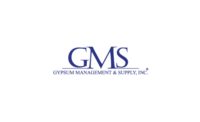Tuesday was a day filled with educational sessions ranging from Augmented Reality to OSHA Compliance.
-
Augmented Reality is the New Reality: Practical Applications of AR for Real World Problems
-
Right From the Start
-
OSHA Silica Rule Compliance
Augmented Reality is the New Reality: Practical Applications of AR for Real World Problems
Over the past few years virtual reality has gained popularity among AEC professionals, especially architects. Also, by the growth of devices such as Microsoft HoloLens, mixed reality is becoming a new trend in the industry because it enables the user to have interaction with reality as well.
The session talked about practical applications of this augmented reality. It also featured how the Hololens Apps that were developed at Baker Triangle Prefab and how the company is currently using and planning to use this technology in design review, visualization, manufacturing, quality control and marketing.
The speakers of the session were Bardia Jahangiri and David Keane.
Jahangiri is a VD&C specialist with Baker Triangle. Besides VD&C operations such as 3D modeling and coordination, he develops add-ins for Revit, Navisworks and also stand-alone software tools. He is also leading the mixed/augmented reality explorations and develops apps for Microsoft HoloLens.
David Keane works at Baker Triangle Prefab as a VD&C specialist/project engineer. Keane started as a VD&C intern with Baker Triangle in 2012 and returned to accept a full-time position in the BIM department in August 2013. Baker Triangle started its prefab division shortly after, and Keane has worked as a project engineer since the division began. He has also worked designing exterior finished wall panels for several projects including McCamey Hospital in McCamey, Texas, Medical Center of Arlington, and Aloft/Element Hotel in Downtown Austin.
Right From the Start
This session, hosted by Norb Slowikowski, talked about how to align expectations, develop win-win relationships and minimize risk at the beginning of the job.
According to this session, it’s essential to focus on conducting a quality pre-construction meeting.
When you understand and prepare for the job at hand, you can avoid risks that cause
• Higher insurance premiums or loss of coverage.
• A disorganized job that leads to major schedule delays and loss of profits.
• Hazardous job sites.
• A negative image in the industry that costs you future work.
Slowikowski is a productivity consultant who has been working in the construction industry for over 30 years. Prior to starting his consulting business, Slowikowski served as director of manpower development for McDonald’s Corp. He has assisted over 450 contractors in improving productivity and maximizing profitability by focusing on the following activities:
• Training more than 30,000 foremen, superintendents and project managers in management and leadership skills.
• Working with contractor associations around the country in presenting supervisory skills development courses to their membership.
• Serving as an organizational consultant to construction companies in the United States and Canada helping them to reorganize to maximize productivity at all levels of the company.
• Customizing training programs to meet specific contractor needs.
Slowikowski serves as a key instructor for AWCI’s Project Manager Development Series. He is also the author of the recently published book, “Hard-Hat Productivity: The 9 Critical Factors for Maximizing Profits.”
OSHA Silica Rule Compliance
For this session, AWCI sponsored a panel of members to discuss OSHA Silica Rule Compliances and how their companies are responding.
OSHA started enforcement of its very broad and confusing silica rule on Sept. 23, 2017, and in some areas, it affects the wall and ceiling industry.
AWCI has been an active member of the Construction Industry Safety Coalition, which has been working with OSHA to clarify how to respond to the rule.
Discussions included topics such as objective data, silica exposure control plan and competent person training.




Report Abusive Comment